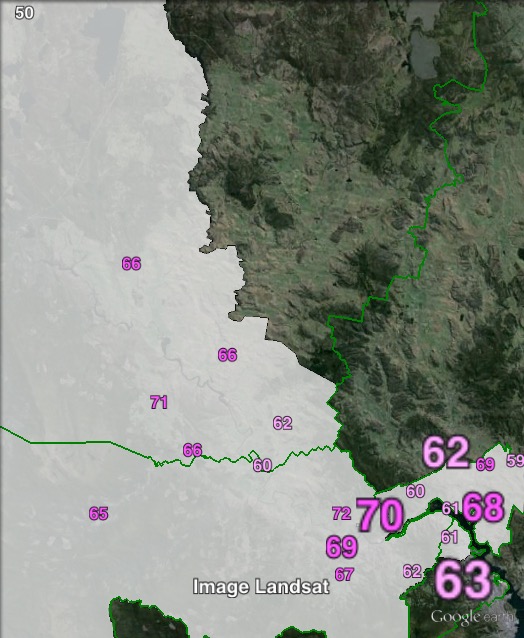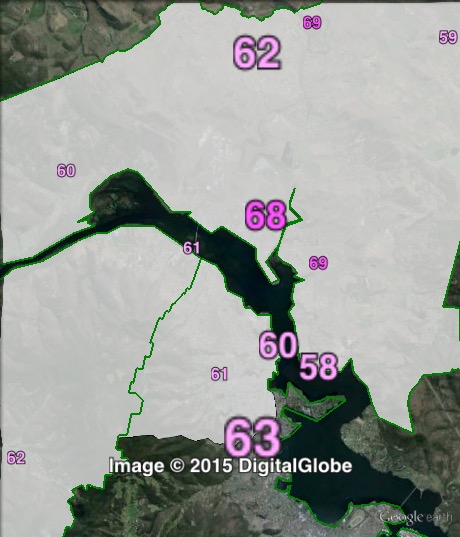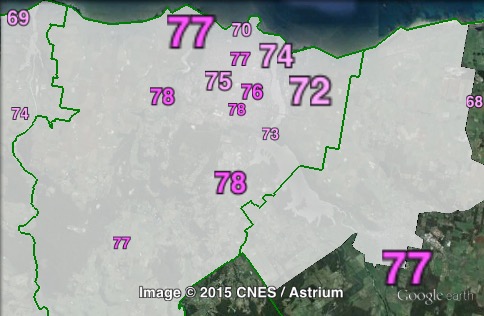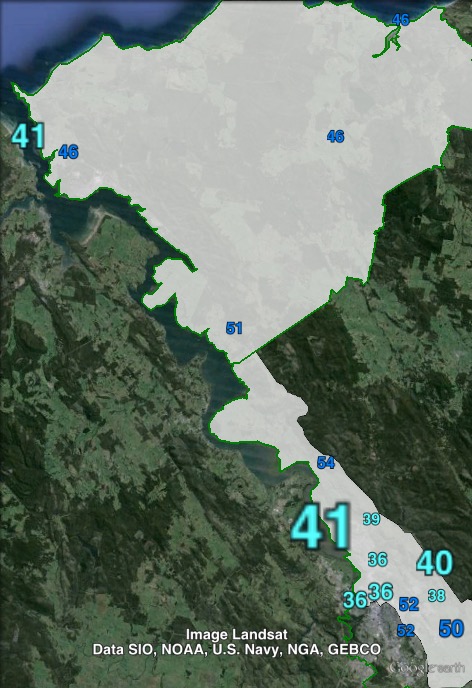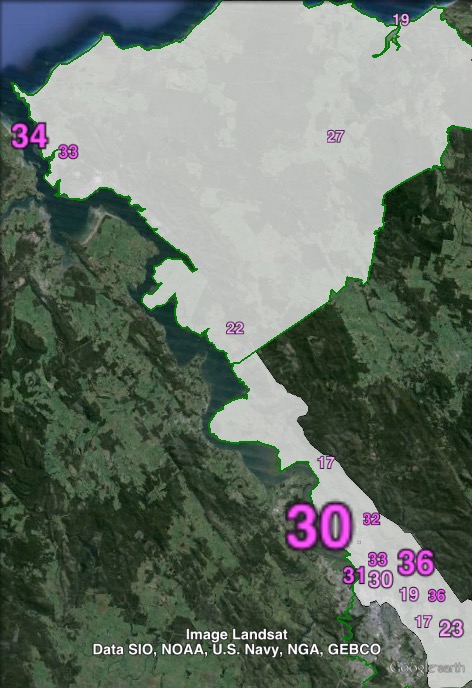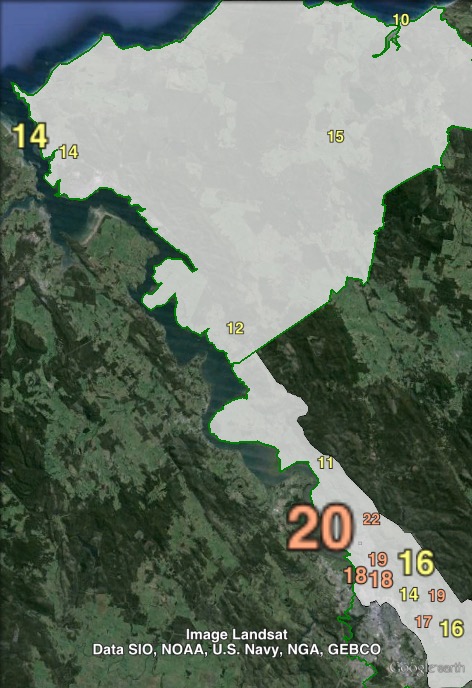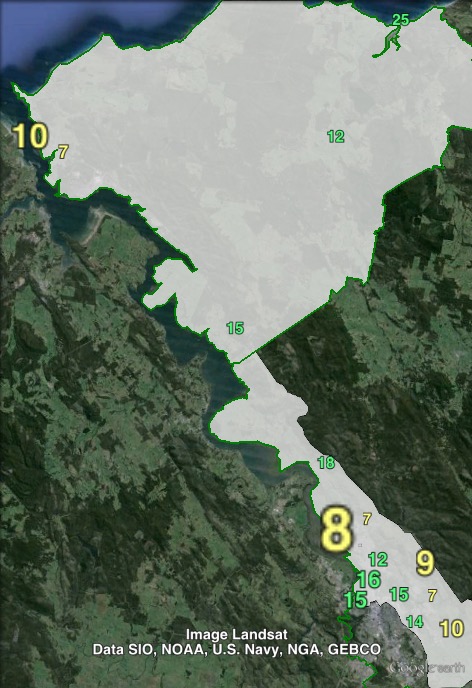Voters on Saturday voted in three out of fifteen Tasmanian Legislative Council electorates, and in all three they re-elected their incumbent MLCs.
In the north-eastern seat of Windermere, conservative independent Ivan Dean saw off three centre-left rivals, including endorsed Labor and Greens candidates.
In the north-western seat of Mersey and in the southern seat of Derwent, centre-left independent Mike Gaffney and Labor’s Craig Farrell respectively held onto their seats against limited conservative opposition.
This post contains booth maps showing the results in each seat, as well as a breakdown of the results between each part of the three seats. As always, I broke down the booths in each seat by sub-area prior to the election, and I’ve used the same breakdowns for this analysis.
I’ll run through the booth breakdown for each seat, and then at the end will follow up with the booth maps, all below the fold.
In Windermere, Ivan Dean faced the strongest opposition, facing three opponents: Labor candidate Jennifer Houston, independent (and former Labor candidate) Scott McLean and Greens candidate Vanessa Bleyer.
Dean is current sitting on 43.94% of the primary vote on a close-to-finished count. On Sunday, the Electoral Commission conducted a provisional distribution of preferences, which gave Dean 55.7% of the two-candidate-preferred over Labor’s Houston. Since this count wasn’t conducted on election night, we only have primary vote results by booth.
Dean topped the poll in all three areas, with his highest vote in the south, and his lowest vote in the centre – the area covering booths at the northern end of the City of Launceston.
Labor’s Houston came second, with a vote ranging from 27.9% in the south to 31.1% in the north. Scott McLean did best in the centre, with 18.9%, while the Greens vote was roughly even across the electorate.
| Voter group | Dean | Houston | McLean | Bleyer | Total | % of votes |
| Central | 40.1 | 29.5 | 18.9 | 11.5 | 6,640 | 38.6 |
| South | 45.1 | 27.9 | 16.3 | 10.7 | 4,602 | 26.8 |
| North | 44.2 | 31.1 | 13.9 | 10.8 | 3,146 | 18.3 |
| Other votes | 50.6 | 24.8 | 14.9 | 9.6 | 2,802 | 16.3 |
In Derwent, Labor’s Craig Farrell has been comfortably re-elected. He currently sits on 64.47% of the vote. Since there are only two candidates, preferences are not relevant.
Craig Farrell’s vote was strongest in the west, but still polled over 60% in the Hobart suburbs at the eastern end of the seat. His conservative opponent Alan Baker polled best at 38.4% in the Glenorchy area in northern Hobart.
| Voter group | Farrell | Baker | Total | % of votes |
| Brighton | 63.7 | 36.3 | 6,280 | 33.0 |
| West | 67.3 | 32.7 | 5,885 | 31.0 |
| Glenorchy | 61.6 | 38.4 | 4,417 | 23.2 |
| Other votes | 64.9 | 35.1 | 2,422 | 12.7 |
In Mersey, independent left-wing independent Mike Gaffney was re-elected by the largest margin, winning 75.2% of the vote in a two-horse race.
Mike Gaffney’s vote was over 70% in all four areas, peaking at 76.6% in the east and 76.4% in the southern half of Devonport.
| Voter group | Gaffney | Gale | Total | % of votes |
| Devonport North | 74.5 | 25.5 | 6,658 | 34.6 |
| Devonport South | 76.4 | 23.6 | 5,163 | 26.8 |
| East | 76.6 | 23.4 | 2,134 | 11.1 |
| West | 71.5 | 28.5 | 1,719 | 8.9 |
| Other votes | 75.8 | 24.2 | 3,566 | 18.5 |
And finally, here are booth maps. I have just included the booth map for the winning candidate in Derwent and Mersey – you can determine the results for the other candidate by subtracting the figure from 100. In Windermere, I have included all four candidates.
